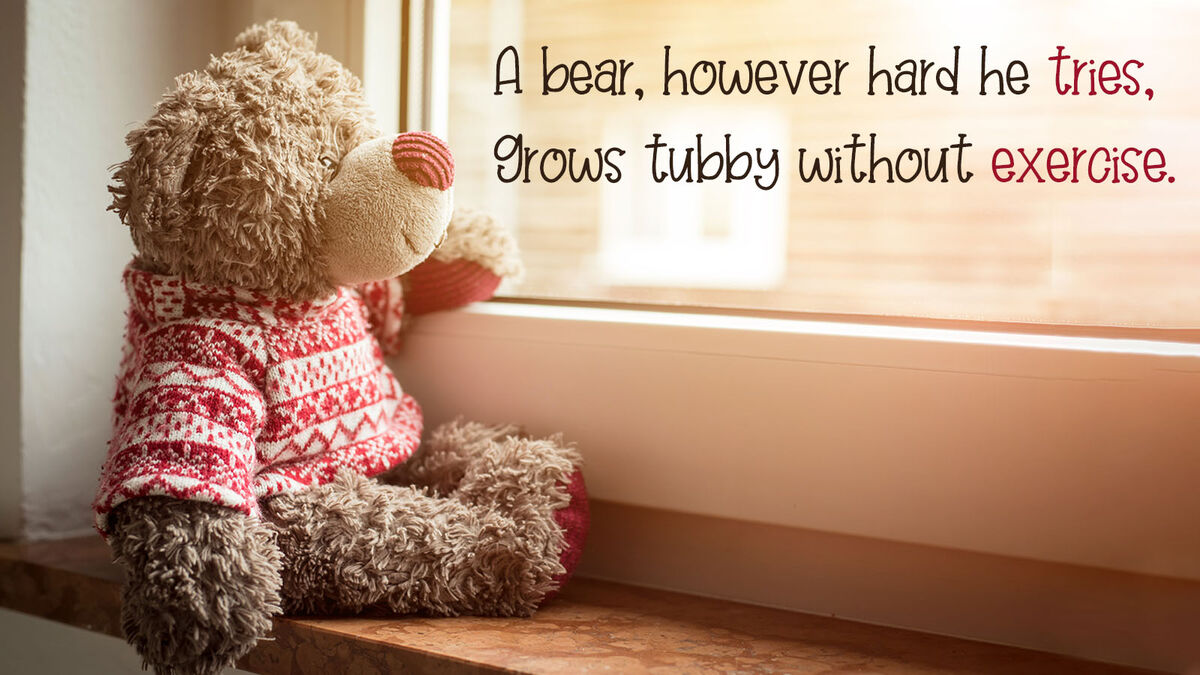
In English, end rhyme is the most common type of rhyme used in poetry. All types of poems that use rhyme have either internal rhymes or end rhymes. As the name implies, end rhymes are found at the end of lines in poetry.
Definition of End Rhyme
End rhyme is defined as “when a poem has lines ending with words that sound the same.” End rhyme is also called tail rhyme or terminal rhyme. It is one of many types of rhyme.
Two or more lines of the poem have to rhyme for it to be considered end rhyme, but they don’t have to be consecutive lines. The first and last line of a stanza or verse can rhyme, or even the first and last lines of the entire poem.
Types of End Rhyme
End rhymes can use different types of rhymes, although most use perfect rhyme.
- perfect rhyme: The words are an exact rhyme with the same ending consonant and vowel sounds. For example, “fat” and “cat.”
- slant rhyme: The words aren’t perfect rhymes, but they have the same final vowel sounds or the same final consonant sounds. For example, “rains” and “sprained.”
- terminal pararhyme: All the consonants in the rhyming words are the same like in “times” and “tames.”
- terminal semirhyme: The words have an identical sound except that one has an extra syllable at the end like with “climb” and “timer.”
Why End Rhyme Is Used in Poetry
End rhymes make it easy for readers to remember and recite poetry. This type of rhyme also gives poetry a musical quality that helps readers read the poem as it’s meant to be heard.
End Rhyme Examples in Children’s Poems
End rhyme is used a lot in children’s poetry as you’ll see in these popular poems from famous children’s poets.
Maggie and Millie and Molly and May by E.E. Cummings
E.E. Cummings uses end rhyme in his poem “maggie and millie and molly and may.” At the beginning and end of the poem he uses perfect rhyme, but in the center his end rhymes could be considered slant rhymes.
The poem ends:
“may came home with a smooth round stone
as small as a world and as large as alone.
For whatever we lose (like a you or a me)
it's always ourselves we find in the sea”
Sick By Shel Silverstein
In the classic poem “Sick,” Shel Silverstein makes the last word of every pair of lines rhyme, which are called rhyming couplets. He mostly uses perfect rhyme and alters the rhyme scheme slightly at the end.
The poem starts:
"I cannot go to school today,’
Said little Peggy Ann McKay.
‘I have the measles and the mumps,
a gash, a rash, and purple bumps."
Teddy Bear by A.A. Milne
Writer A.A. Milne uses end rhyme in his poem “Teddy Bear.” The last word of every pair of lines throughout the poem rhyme.
The poem starts:
“A bear, however hard he tries,
Grows tubby without exercise.
Our Teddy Bear is short and fat,
Which is not to be wondered at;
End Rhyme Examples in Adult Poetry
Poets who write for adults still use end rhyme, but they try to avoid cliché rhymes and standard rhyming pairs.
The Road Not Taken by Robert Frost
Robert Frost’s iconic poem “The Road Not Taken” includes end rhymes in an abaab rhyme scheme.
The poem ends:
“I shall be telling this with a sigh
Somewhere ages and ages hence:
Two roads diverged in a wood, and I—
I took the one less traveled by,
And that has made all the difference.
The Raven by Edgar Allan Poe
Even long poems with dark topics like “The Raven” by Edgar Allan Poe can use end rhyme. This poem uses an abcbbb rhyme scheme.
Throughout the poem, Poe rhymes words with the “or” sound at the end of the second, fourth, fifth, and sixth lines of each stanza. He starts with the word “lore” and rhymes it with words like “door,” “more,” “Lenore,” and “before.”
End With a Rhyme
You can also find examples of end rhyme in many songs and books. Use what you’ve learned about end rhyme to write a poem that includes this type of rhyme.